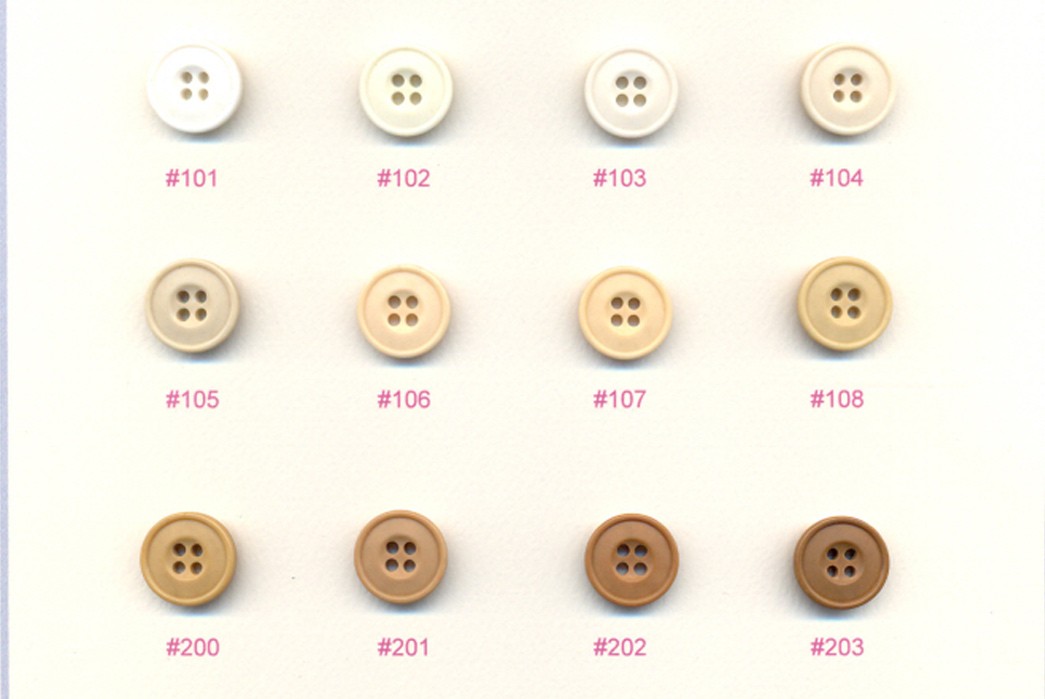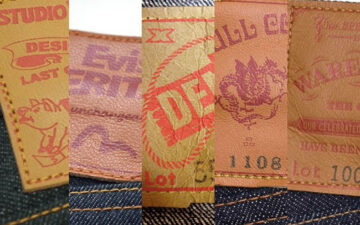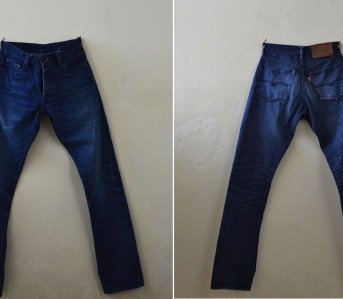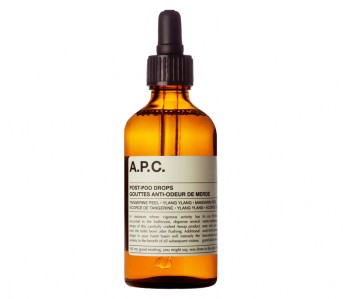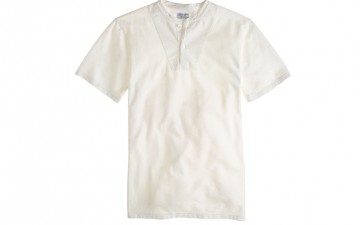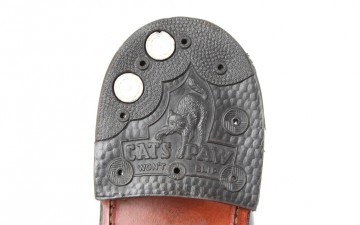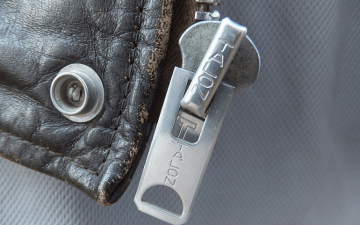You may not put a great deal of thought into the buttons on the apparel you wear, but trust me, someone did. One of the most amazing developments in button technology (if there is such a thing) in the twentieth century is the use of Melamine Resin, a plastic polymer formed by melamine and formaldehyde. Melamine products are shatterproof, fireproof, and incredibly light, which made them a natural fit for military applications, but not in the way you might initially imagine.
In 1940, the US Navy was looking for a replacement for its tableware. The ceramic plates, bowls, and mugs they had been using were too heavy, fragile, and large for the Navy’s uses, especially when the onset of WWII looked to engulf the United States at any given moment. The British armed forces had switched over to a type of urea-formaldehyde plastic called ‘Beetle’, but it was not nearly as resilient as the Americans wanted.
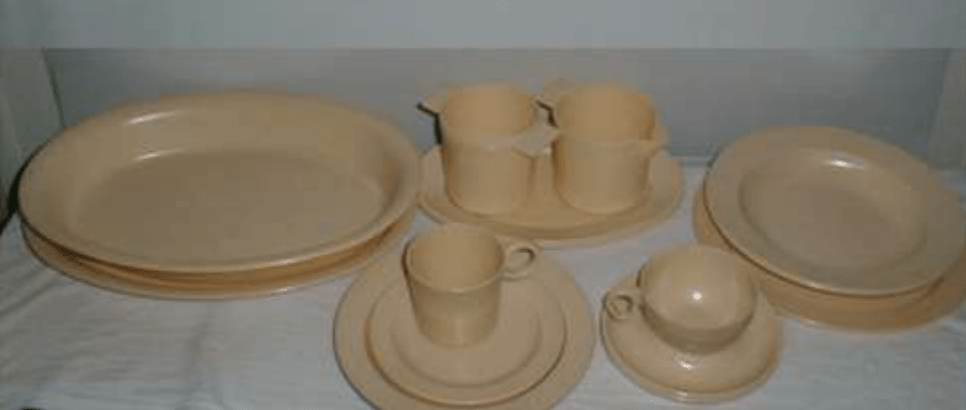
“Watertown Ware” the melamine dish sets made for the Navy in WWII. Image via Plastic Life.
Watertown Manufacturing Company, a production facility in Connecticut won the contract and introduced the Navy to the beauty that is Melamine. The new plates and bowls not only weighed 80 percent less and took up 75 percent less shelf space than their ceramic counterparts, but they were also nearly indestructible. By 1942, the Navy already had melamine on ships around the world and with the price of the plastic plummeting, the military began to look for other applications.
Traditional nut, wood, and mother of pearl buttons simply wouldn’t do in a modern war. In 1942, Emsig Manufacturing Corporation, also of Connecticut, introduced the melamine shirt button and soon melamine became the choice that was cheaper, laundered better, and simply wouldn’t break. The majority of the buttons on American uniforms from WWII onwards were made of melamine.
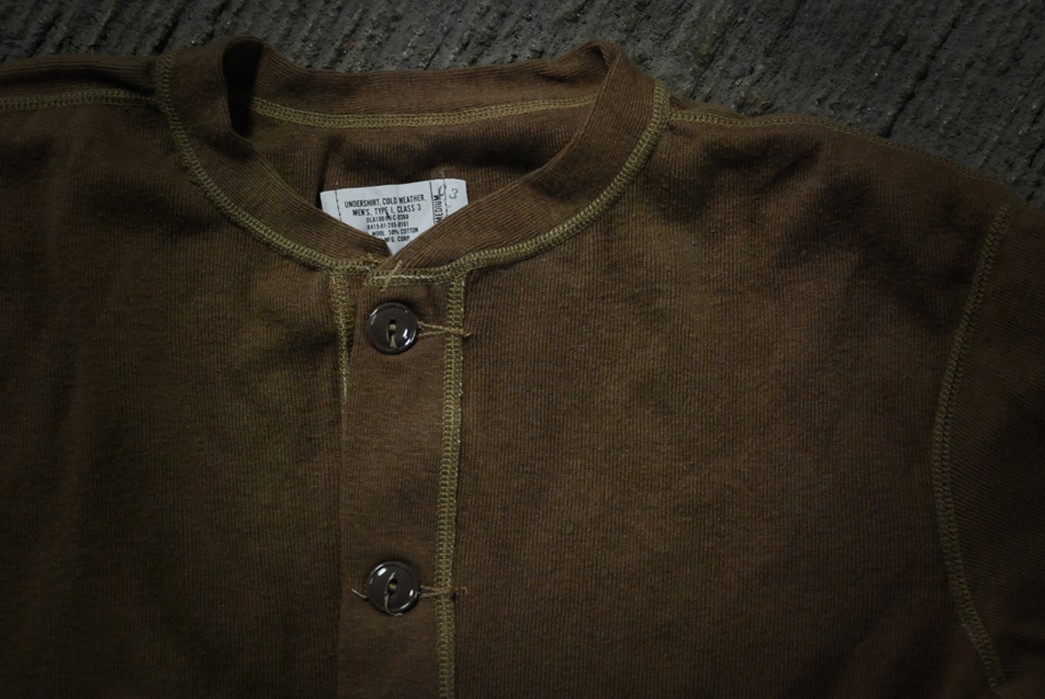
A military issue henley with melamine placket buttons. Image via Red Crow.
You can tell a melamine button as they usually have a telltale seam around the outside edge, “flash” excess plastic in the buttonholes, or a knockout pin left from the button mold. If you want to go all The Thing on it though, you can hold it to an open flame as a melamine button will never catch fire.
Many brands today still use melamine buttons on their products, like Engineered Garments, Nigel Cabourn, and Left Field NYC.
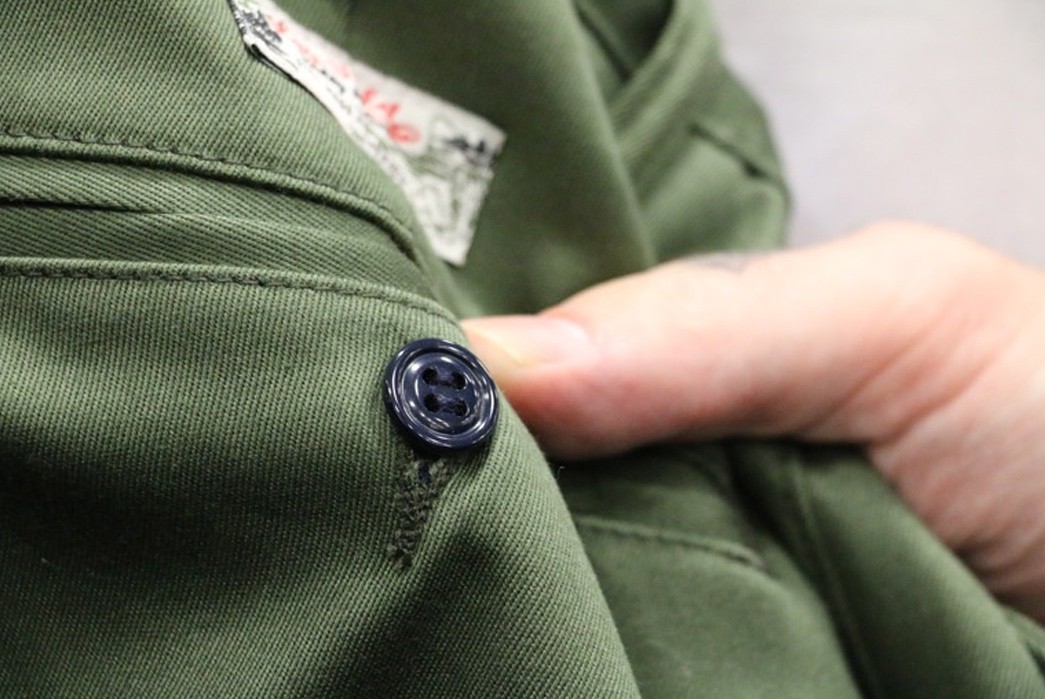
Melamine button on Left Field NYC chinos.
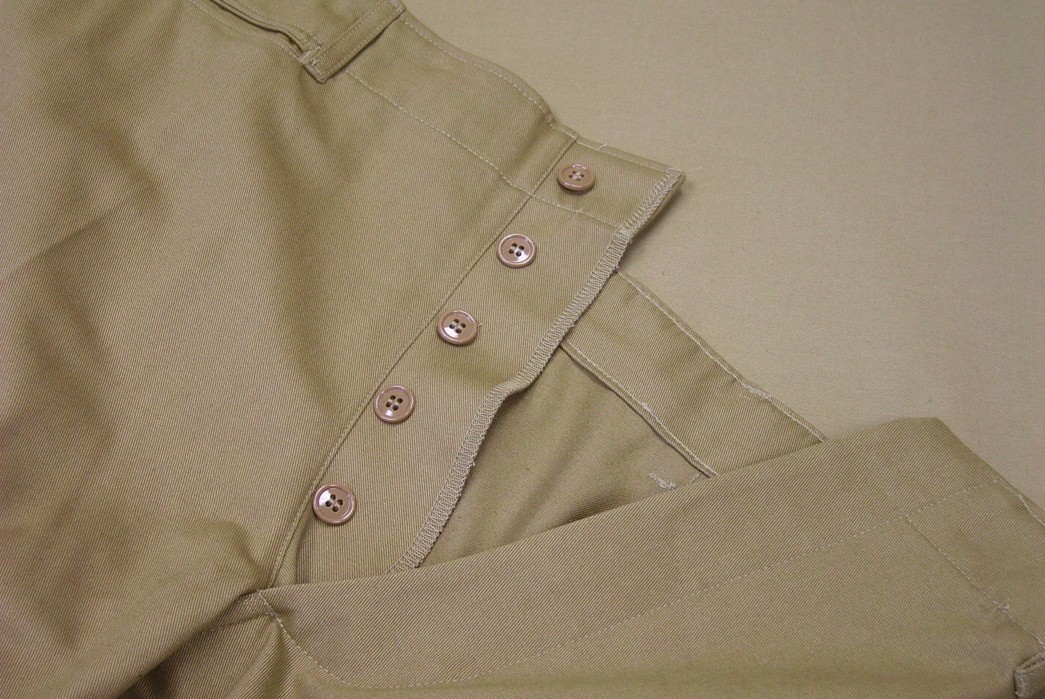
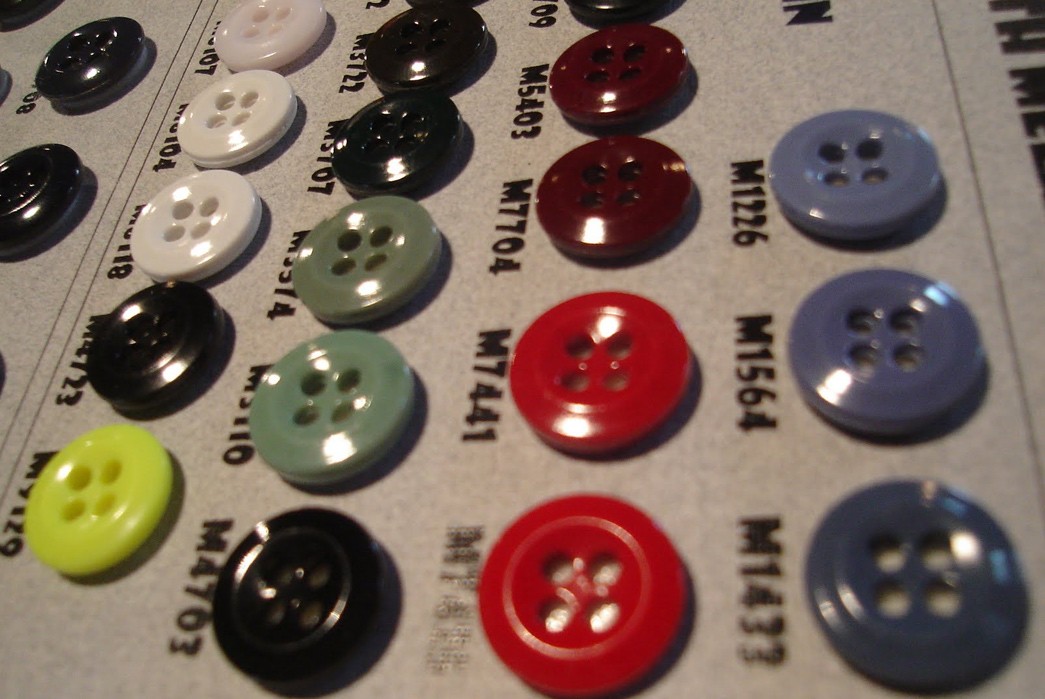
Vintage repro melamine buttons on display. Image via The 1939 Clothier.

